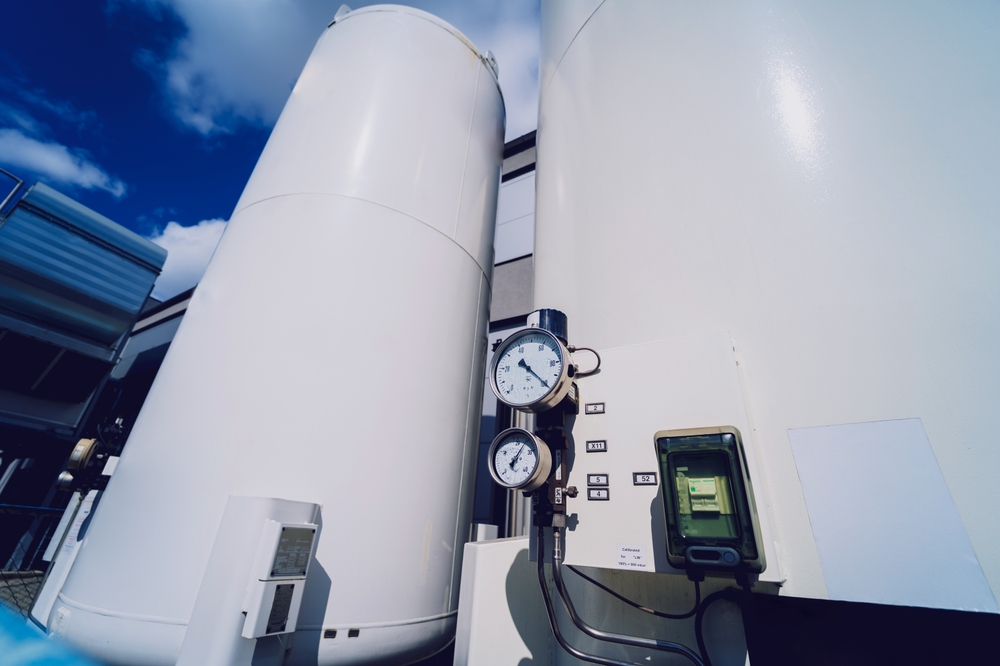An Arizona Company Will Freeze You for $200,000, or Just Your Head for $80,000

For centuries, humans have searched for ways to cheat mortality. From the Fountain of Youth to the myth of cryogenic sleep in science fiction, the dream of extending life beyond its natural limits has fascinated us. But what if that dream was no longer fiction?
Right now, in a high-tech facility in Berlin, bodies rest in metal chambers at -320°F, suspended in time, waiting for a future where science might bring them back. This isn’t a plot from a dystopian novel—it’s the promise of cryonics, a process that freezes human bodies and brains in liquid nitrogen in hopes of future revival. A Berlin-based startup, Tomorrow Bio, is at the forefront of this controversial practice, offering people a shot at waking up decades—or even centuries—into the future.
But here’s the catch: no one has ever been revived from cryonic suspension. The technology to bring a frozen body back to life doesn’t exist—at least, not yet. And for those willing to place a $222,603 bet on the future, the question remains: Is this the ultimate scientific breakthrough or just an expensive leap of faith?
The Science Behind Cryonics: Freezing Time, Literally
Preserving a human body isn’t as simple as placing it in a freezer and hoping for the best. If you tried that, ice crystals would form inside the cells, causing catastrophic damage—think of how frozen fruit turns mushy when it thaws. The delicate structures of the brain, including the neural connections that store memories, would be destroyed in the process. Cryonics attempts to avoid this fate through a process called vitrification, which replaces the body’s fluids with a medical-grade antifreeze solution. This chemical mixture prevents ice from forming and allows the body to be cooled to extreme temperatures without cellular destruction.
Tomorrow Bio, a Berlin-based cryonics startup, has refined this process with what they call “field cryoprotection.” Unlike traditional cryonics procedures that require transportation to a specialized facility, Tomorrow Bio’s approach begins immediately after legal death is declared. A mobile surgical team is dispatched to the deceased’s location, where they rapidly cool the body and circulate the preservation chemicals to slow down biological decay. This step is crucial because even a few hours of delay could result in irreversible tissue damage. The company’s goal is to preserve the brain as close to its original state as possible, maintaining its intricate neural pathways in hopes that future advancements in medicine and technology will one day restore both body and consciousness.
Once the preservation process is complete, the body is transferred to a long-term storage chamber filled with liquid nitrogen, where it remains indefinitely at a temperature of approximately -320 degrees Fahrenheit. At this temperature, all biological activity—including decomposition—completely halts. In theory, the individual is suspended in time, waiting for the moment when scientific breakthroughs might make revival possible.
The idea of cryonics exists in a strange space between science and science fiction. To date, no human has ever been successfully revived from cryogenic preservation, and the technology needed to restore life at the cellular level does not yet exist. But for those who sign up, it’s a gamble they’re willing to take. After all, the alternative is the absolute certainty of death.
The Cost of Immortality: How Much to Freeze a Dream?
The price of betting on the future isn’t cheap. Cryonics isn’t just a scientific experiment—it’s a long-term investment in the hope that technology will eventually catch up to ambition. Tomorrow Bio offers two primary preservation options: full-body cryopreservation for approximately $222,603 and brain-only preservation for around $83,473. The difference in cost reflects the complexity of preserving an entire body versus just the brain, which many believe holds the essence of consciousness and memory. For those hesitant to commit to human cryopreservation, there’s even an option to start smaller—by freezing a pet for as little as $2,500.
These figures may seem astronomical, but most clients don’t pay out of pocket. Instead, many fund their preservation through life insurance policies. By naming Tomorrow Bio as the beneficiary of a policy, individuals can ensure that the costs are covered when the time comes. This strategy makes cryonics more accessible to a broader audience, shifting it from an exclusive luxury to a possibility for anyone willing to redirect their financial planning toward an uncertain future.
But beyond the price tag, there’s a deeper question: what exactly are people paying for? The cost doesn’t just cover the freezing process—it includes decades (potentially centuries) of maintenance. The bodies are stored in liquid nitrogen, requiring ongoing monitoring and replenishment to keep them preserved. The entire operation hinges on the assumption that Tomorrow Bio, or a successor organization, will exist long enough to keep these individuals in a state of suspended animation until science discovers a way to bring them back.
Who’s Signing Up? The Growing Demand for Cryonics
Tomorrow Bio has already cryopreserved six individuals and five pets, with more than 650 people on its waiting list. That number continues to rise as advancements in biotechnology and artificial intelligence fuel optimism about the possibilities of future revival. But who are these people willing to gamble on an uncertain future?
The motivations vary. Some are driven by an outright fear of death, unwilling to accept the idea that their existence must come to an absolute end. Others are technology enthusiasts who believe that medical science will one day make revival possible, whether through cellular repair, genetic engineering, or even the ability to upload a preserved brain’s consciousness into an artificial body. Some individuals view cryonics as an extension of their life’s work—scientists, futurists, and innovators who want to see how their contributions shape the world centuries from now.
Then there are those signing up not for themselves, but for the ones they love. The idea of freezing a pet, a spouse, or a family member comes from a deep emotional desire to reunite in a future where death is no longer permanent. In a world where technology has already redefined so many aspects of human life, some see cryonics as a logical next step—a final defiance of nature’s most unforgiving rule.
However, despite the growing interest, cryonics remains controversial. Signing up for preservation doesn’t guarantee revival. In fact, as of today, there is no scientific proof that cryonically frozen individuals can ever be brought back to life. That raises an unsettling question: are these people pioneers of the future, or are they simply indulging in an expensive fantasy?
The Ethics and Uncertainty: Science or Science Fiction?
Cryonics presents an unsettling paradox: it offers the possibility of a second life, but with no guarantee that life will ever come. It’s a bet on future technology that doesn’t yet exist, and for many, that raises serious ethical and scientific concerns. The biggest obstacle is the lack of a proven revival method. While vitrification prevents cellular destruction during freezing, reanimating a human body—or even just a brain—is an entirely different challenge. Scientists would need to restore every microscopic structure to its original state, repair any damage caused during preservation, and, most critically, restart biological functions. Current medicine has no way to reverse the damage caused by cryopreservation, let alone restore consciousness, memories, and identity.
Beyond the technical challenges, there are profound ethical questions. Is it right to offer people hope when there is no scientific proof that revival is possible? Does freezing a body in liquid nitrogen truly preserve the essence of a person, or is it simply delaying an inevitable end? Critics argue that cryonics is nothing more than a high-tech version of wishful thinking, preying on people’s fear of death and promising a future that may never arrive.
There’s also the issue of the future itself. Even if medical advancements make revival possible, what kind of world would these individuals wake up to? Would they have legal rights? Would they even recognize the society around them? If someone is revived centuries from now, they could find themselves in a world where they have no family, no resources, and no place to belong.
Supporters of cryonics argue that these questions are no different from the uncertainties faced by early pioneers in any scientific field. Once, people doubted organ transplants, artificial intelligence, and space travel. Now, those things are a reality. To them, cryonics is not a scam—it’s an investment in possibility. Even if the chances of success are slim, they believe that the alternative, complete and final death, is an outcome worth trying to avoid.
What the Experts Say: Hope or Hopeless?
The scientific community remains divided on whether cryonics is a legitimate pathway to future revival or an elaborate exercise in wishful thinking. On one side, some researchers believe that advancements in regenerative medicine, nanotechnology, and artificial intelligence could one day make it possible to repair the cellular damage caused by freezing and restore biological function. On the other, many neuroscientists and medical experts argue that even if a frozen body can be physically revived, there is no guarantee that consciousness, memory, or identity will remain intact.
One of the biggest challenges is brain preservation. While the vitrification process helps prevent ice crystals from forming, there is still debate over whether it truly preserves the brain’s complex neural networks. Without a perfect preservation method, critical structures responsible for cognition and personality may be lost. Dr. Kenneth Hayworth, a neuroscientist and president of the Brain Preservation Foundation, has pointed out that while techniques like aldehyde-stabilized cryopreservation have successfully preserved neural structures in small mammals, there is still no evidence that this can be scaled up to revive a human brain.
Additionally, even if future scientists were able to perfectly thaw and restore a preserved body, what happens next? Would the person simply wake up as their old self, or would they be nothing more than a biological machine missing the essence of who they once were? Some theorists suggest that true revival may not come from repairing frozen cells but from uploading consciousness into a digital form—essentially transferring the person’s mind into an artificial or cloned body. However, this concept enters even murkier philosophical and ethical waters, raising questions about the very nature of selfhood and whether a digital copy of someone’s mind is truly the same person.
Featured Image Source: Shutterstock
Loading...






